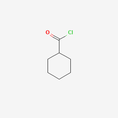Introduction: Heptamethyldisilazane is a specialized silazane compound with the chemical formula (CH₃)₇Si₂NH. It is characterized by its unique structure containing seven methyl groups attached to two silicon atoms, imparting specific chemical reactivity and functionality. This colorless liquid is commonly used as a reagent in organic synthesis, particularly in the pharmaceutical industry for the modification of functional groups and protection of sensitive compounds.
Advantages:
Versatile Reactivity: Heptamethyldisilazane offers versatile reactivity, allowing for various synthetic transformations and functional group modifications.
Selective Protection: Acts as a selective protecting agent for hydroxyl and amino groups, enabling controlled chemical reactions.
Anhydrous Conditions: Facilitates reactions under anhydrous conditions, crucial for sensitive compounds and complex synthesis pathways.
High Purity: Available in high-purity grades, ensuring minimal impurities for reliable and reproducible results.
Solvent Compatibility: Exhibits compatibility with a range of solvents, enhancing its applicability in different reaction environments.
Applications:
Functional Group Protection: Used for the protection of hydroxyl and amino groups in organic synthesis to control reactivity and selectivity.
Dehydration Reactions: Facilitates dehydration reactions by removing water from reaction mixtures, promoting desired reaction pathways.
Intermediate Synthesis: Essential in the synthesis of pharmaceutical intermediates, providing key reactions for complex molecule construction.
Surface Modification: Utilized in surface modification processes to enhance material properties and surface functionalities.
Catalyst Preparation: Acts as a precursor in catalyst preparation for various organic transformations in chemical synthesis.
Frequently Asked Questions (FAQ):
Q1: What is Heptamethyldisilazane commonly used for? A1: Heptamethyldisilazane is commonly used for functional group protection, dehydration reactions, intermediate synthesis in pharmaceuticals, surface modification, and catalyst preparation.
Q2: How should Heptamethyldisilazane be stored? A2: It should be stored in a cool, dry place away from direct sunlight and moisture. Ensure the container is tightly sealed to prevent contamination and degradation.
Q3: Is Heptamethyldisilazane hazardous to health? A3: While generally considered safe when handled properly, precautions should be taken to avoid skin and eye contact. Use appropriate personal protective equipment (PPE) during handling.
Q4: Can Heptamethyldisilazane be used in laboratory-scale reactions? A4: Yes, it is commonly used in laboratory-scale organic reactions for functional group protection and other synthetic transformations.
Q5: Are there specific purity grades available for Heptamethyldisilazane? A5: Yes, high-purity grades are available to meet the stringent requirements of pharmaceutical and research applications.
Q6: How does Heptamethyldisilazane enable selective protection of functional groups? A6: By reacting selectively with specific functional groups, Heptamethyldisilazane shields them from unwanted reactions, allowing for controlled synthetic pathways.
Q7: Can Heptamethyldisilazane be used in conjunction with other reagents? A7: Yes, it can be used in combination with other reagents and catalysts to facilitate complex organic transformations and synthesis.
Q8: What are the typical reaction conditions for using Heptamethyldisilazane? A8: Reactions involving Heptamethyldisilazane are often carried out under anhydrous conditions and in the presence of suitable catalysts or solvents.
Hot Tags: heptamethyldisilazane, China heptamethyldisilazane manufacturers, suppliers, factory, silicone yoga mats, silicone heaters, silicone polyester gloves, silicone gardening gloves, silicone dishwashing gloves, silicone air purifiers










